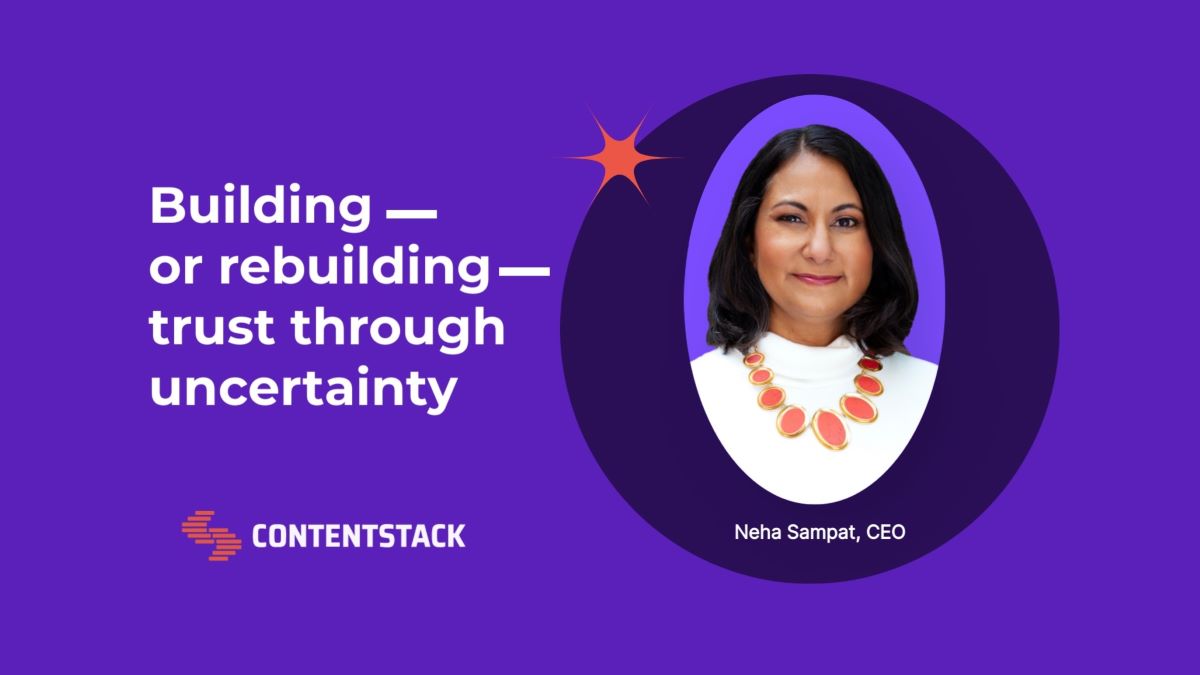Building – or rebuilding – trust through uncertainty

First, it was the pandemic. Then rising interest rates, a VC "winter" and a major bank run still affecting the tech sector.
I'm not a Debbie Downer, but I am realistic. In a lot of ways, uncertainty has become the norm. That uncertainty has the potential to disrupt and distract a workforce. But if you've prioritized trust with your team, those disruptions and distractions can be minimized.
Keith Mazanec is head of Engineering at Brad's Deals, which curates daily deals across the web. You'd think he'd talk tech on our “People Changing Enterprises” podcast. And, yes, tech was part of it. But he also shared that in 2022 they experienced layoffs and had to pause the tech transformation journey they were on because of it. When the project resumed, it largely became a "people journey" focused on rebuilding trust.
There’s a reason why Forrester predicted trust building would take a starring role for organizations across the board this year. It’s the beating heart of all businesses planning for long-term success.
Here are some trust lessons I've learned building and running tech companies through the years:
Don't wait to build trust
For Contentstack, employee trust-building starts before they are part of the tribe. We lighthouse our values publicly and prominently — and then we're vigilant about protecting and reinforcing them.
"We do the right thing when nobody is watching" is one of our values. That could live on a home page alone, but we put it to action. In one case, someone told us that one of our competitors had a security issue. Instead of exploiting the problem, we alerted the engineering team at that competitor. The decision was made over Slack by the team who discovered the issue and a group of leaders across the company. Moments like that create trust because everyone sees we act like good humans instead of just saying we are.
Know what you stand for and then be that thing. The biggest trust mistake organizations can make is waiting until a crisis or uncertainty to try to build it. Your team and partners would see right through it.
What if that period of uncertainty is already here? Transparency and empathy are the rules to live by.
Let's take the recent Silicon Valley Bank example. The speed at which everything progressed over five days was unsettling for everyone. We created a sense of security by communicating transparently, consistently and confidently and being open to questions — even when we didn't have all the information yet. The message was: "We're on it and figuring things out."
Focus on transparency
Mazanek had to build trust with the editorial and marketing teams when Brad's Deals first decided to shift from its decades-old legacy CMS system. He focused on the why, involved them in the planning and got some quick early wins — launching an experience on their new stack — that built confidence.
Unfortunately, some of those people were laid off, and he had to start from scratch on the trust side. That's where reinforcing a culture of transparency came in. He implemented systems that ensured business continuity through documentation. The team took knowledge that lived in people's heads only and made it public, so at any given time, people had access to the same level of information about how things worked.
"It ceased to be a single race and became a relay race where we can hand things off from one person to another," he said. This helps Brad's Deals remain stable in a sea of change.
Harness new energy
Crises and tough times are opportunities to build trust. They also surface new ideas — whether coming from people who have just joined an organization, others who used to not be in a position to exert opinions or influence or just pure necessity to make something happen.
"The silver lining of going through some of these challenges is you wind up on the other side with fresh perspectives,” Mazanek said. “And those fresh perspectives are really invigorating."
Uncertainty has helped Contentstack get creative, not just from an employee perspective. Many of our customers are facing their own turbulent circumstances, and the question for us becomes: What can we do to help them still accomplish their goals? This has led to initiatives like creating our Technical Solutions Organization, which helps customers work through challenges as they go composable and share best practices from other customers and partners along the way.
Uncertainty is disruptive and disappointing many times; it also has the potential to lead to creative outcomes we wouldn't have thought of otherwise.
I tend to face adversity head-on and remind myself that we'll be on the other side one day. In the meantime, I focus on what will make us stronger until we make it there. Creating a high-trust culture with my team, partners and customers is one of those things.
About Contentstack
The Contentstack team comprises highly skilled professionals specializing in product marketing, customer acquisition and retention, and digital marketing strategy. With extensive experience holding senior positions in notable technology companies across various sectors, they bring diverse backgrounds and deep industry knowledge to deliver impactful solutions.
Contentstack stands out in the composable DXP and Headless CMS markets with an impressive track record of 87 G2 user awards, 6 analyst recognitions, and 3 industry accolades, showcasing its robust market presence and user satisfaction.
Check out our case studies to see why industry-leading companies trust Contentstack.
Experience the power of Contentstack's award-winning platform by scheduling a demo, starting a free trial, or joining a small group demo today.
Follow Contentstack on Linkedin
Recommended posts



.svg?format=pjpg&auto=webp)


.svg?format=pjpg&auto=webp)
.svg?format=pjpg&auto=webp)
.svg?format=pjpg&auto=webp)
.svg?format=pjpg&auto=webp)






